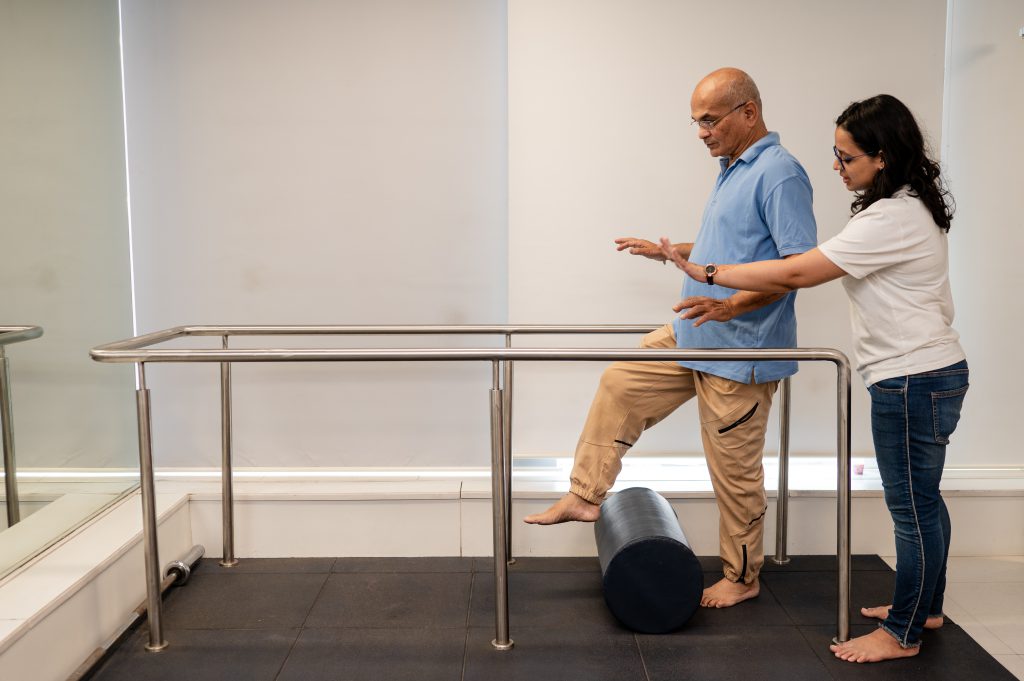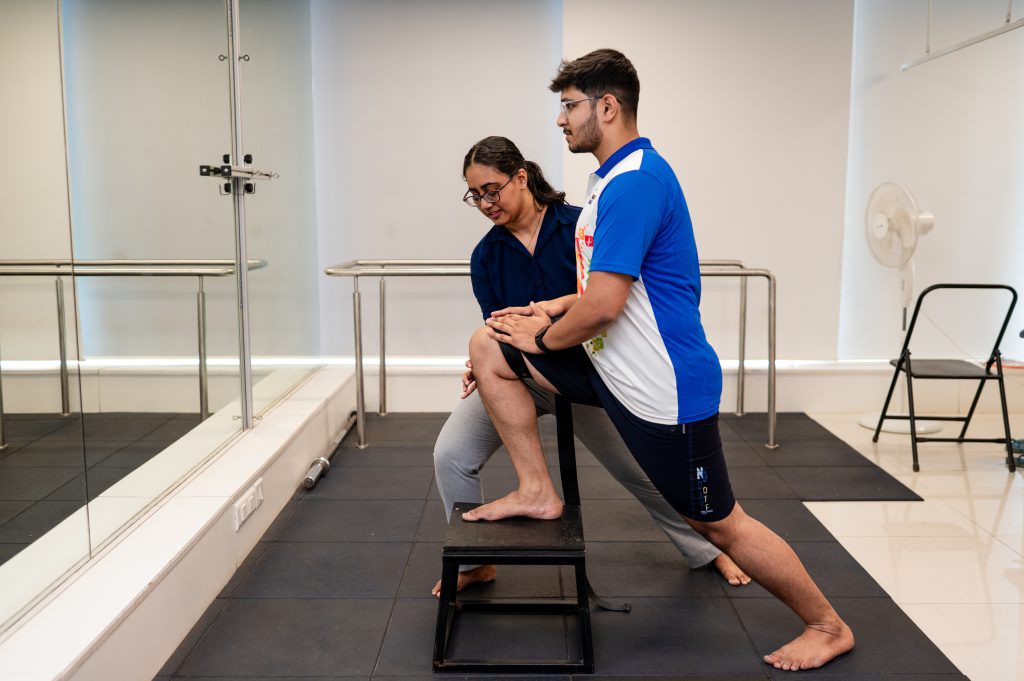Introduction
When pain strikes—whether it’s back pain, joint stiffness, or a nagging sports injury—most people reach for a quick fix: painkillers. While meds might offer temporary relief, it often masks the problem rather than treating the root cause. In contrast, physiotherapy focuses on healing through movement, strengthening, and long-term recovery. Treating the root cause is the key to long lasting pain relief.
In this blog, we explore the key differences between painkillers and physiotherapy, the risks of relying on medications, and why movement is the best medicine for lasting relief and wellness.
What Are Painkillers?
Painkillers or analgesics are medications used to relieve pain. They include:
- Paracetamol (acetaminophen): For mild to moderate pain.
- NSAIDs (non-steroidal anti-inflammatory drugs): Like ibuprofen or diclofenac.
- Opioids: Like tramadol or morphine, used for severe pain.
These drugs work by blocking pain signals or reducing inflammation. However, they don’t address the root cause of the pain.
The Limitations and Risks of Painkillers
While painkillers seem convenient, they come with several downsides:
1. Temporary Relief
Painkillers can dull the pain, but they don’t heal injuries or fix muscle imbalances. As soon as the effect wears off, the pain often returns.
2. Side Effects
Common side effects include:
- Stomach issues (gastritis, ulcers)
- Liver or kidney damage (with long-term use)
- Drowsiness and dependence (especially opioids)
3. Masking the Problem
Painkillers hide the pain, which might make people push through activities that worsen the underlying issue, delaying proper treatment.
What is Physiotherapy?
Physiotherapy is a science-backed, holistic approach to treating pain, injury, and movement disorders. It involves:
- Exercise therapy
- Manual therapy
- Electrotherapy
- Posture correction
- Education and lifestyle advice
The goal is to restore function, prevent recurrence, and improve overall quality of life.

Why Physiotherapy Works Better Than Painkillers
1. Treats the Root Cause
A physiotherapist identifies what’s actually causing the pain—tight muscles, poor posture, weak joints, repetitive strain—and treats it with targeted techniques.
For example:
- A person with knee pain may have hip weakness or flat feet.
- Someone with back pain may suffer from poor posture or sedentary habits.
Painkillers just mute the signal; physiotherapy solves the problem.
2. Encourages Healing Through Movement
Physiotherapy uses movement as medicine. Gentle, guided exercises:
- Improve blood flow
- Reduce inflammation naturally
- Promote tissue repair
- Strengthen supporting muscles
As a result, recovery is not only faster but also more complete.
3. Builds Long-Term Strength and Flexibility
Physiotherapy helps you regain mobility, improve strength, and enhance joint stability. This reduces the chances of future injuries or relapses.

4. Reduces Dependency on Medications
With consistent physiotherapy, many patients report significantly reduced need for painkillers, avoiding long-term side effects.
Real-Life Example
Case Study: Lower Back Pain
A 46 year old physically active male started having pain in the low back region while practicing yoga. Pain had been persistent for 4-5 years, and he had little to no relief with any treatments he tried. He had to rely on painkillers during painful episodes.
- After just 3 weeks of physiotherapy focusing on posture correction, core strengthening, and mobility drills, the patient experienced a 70% reduction in pain.
- By week 6, he was off painkillers entirely.
- He went on to complete multiple Himalayan treks after treatment. He doesn’t miss a visit to our Physiotherapist before every trek to ensure complete fitness.
Click here to know more about his experience with us.
To know more about the advantages of physiotherapy in chronic low back pain, click here
Physiotherapy for Common Conditions
Here’s how physiotherapy helps where painkillers often fall short:
| Condition | Painkillers Do This | Physiotherapy Does This |
| Back pain | Reduces inflammation temporarily | Strengthens core, improves posture |
| Arthritis | Masks joint pain | Improves joint mobility and muscle support |
| Sports injuries | Blocks pain | Accelerates recovery and prevents reinjury |
| Neck stiffness | Eases discomfort | Restores range of motion and corrects ergonomics |
| Sciatica | Temporarily numbs nerve pain | Targets nerve decompression and muscle release |
When Painkillers May Be Necessary
In some cases, painkillers do play a role, especially:
- Immediately after surgery
- In severe, acute injuries
- For managing pain that interferes with daily functioning
But they should be used in combination with physiotherapy, not as the only treatment.
Click here to check out different equipment used along with Exercise Therapy at Rehab Station
The Rehab Station Approach: Movement Over Medication
At Rehab Station, we believe in empowering our patients with the tools to move better, live stronger, and stay pain-free—without relying on pills.
Our Approach Includes:
- Detailed assessment to find the root cause of your pain
- Personalized exercise programs for recovery and prevention
- Hands-on therapy to ease tight muscles and improve circulation
- Lifestyle coaching to keep your body in balance
We don’t just treat pain—we help you transform how your body moves.

Simple Movements You Can Start With Today
While every case is unique, here are a few gentle exercises most people can do to support pain relief:
✅ Cat-Cow Stretch (for back stiffness)
Improves spinal flexibility.
✅ Pelvic Tilts (for lower back pain)
Activates deep core muscles.
✅ Wall Angels (for neck and shoulder tension)
Corrects posture and opens up tight shoulders.
Note: Always consult a physiotherapist before beginning new exercises if you have pain.
Conclusion: Choose Long-Term Relief Over Short-Term Fixes
While painkillers might offer a quick escape, they rarely offer a cure. Physiotherapy, on the other hand, offers a long-term solution by treating the real cause of your discomfort and empowering you to take control of your health.
So, the next time pain knocks on your door, don’t just reach for the pill bottle—reach out to a physiotherapist.
Because when it comes to pain relief and recovery, movement truly is the best medicine.
Ready to Heal Without Pills?
Book a free consultation at Rehab Station today and experience the power of personalized physiotherapy. Let us help you move better, live stronger, and stay pain-free—naturally.
Dr. Shreya Mane (PT)




